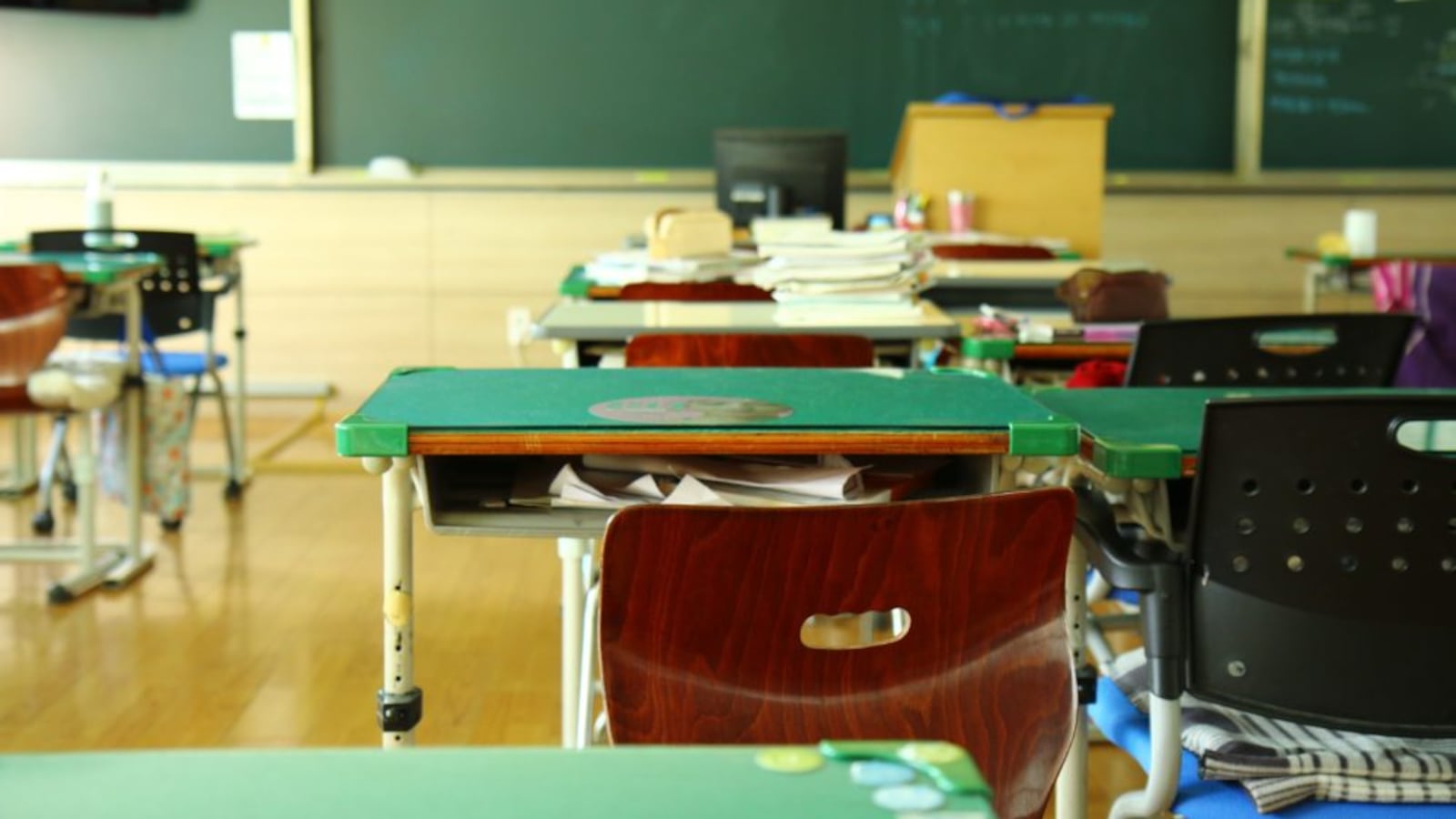A day after the city’s education department revealed that nearly 1,000 classrooms serving the city’s youngest students have deteriorating lead paint, parents said they were caught off guard by the revelations and upset the city has not communicated that their children were potentially exposed.
Among the classrooms where officials found peeling lead paint was room B7, tucked in the basement of Brooklyn’s P.S. 9. Christine Fortis-Raman said her daughter spent her kindergarten year in that room last year and is concerned about how it might affect her — and wondering why no one has yet answered that question.
“These kids are there all day long, the teacher’s there all day long,” Fortis-Raman said, adding that she plans to ask her daughter’s doctor to test for lead before the start of the school year. “We shouldn’t be finding out through an article. They should be reaching out to parents.”
Lead exposure can negatively impact brain development and impede a student’s capacity to learn, even leading to aggressiveness or inattentiveness. Children can be exposed by eating paint chips or inhaling tainted dust. But research has found that simple interventions, like making sure children have access to nutritious food, can help treat the effects and even improve school performance.
[Use our database to find out if your school is affected.]
The education department said it would send letters to families, but it was not clear when those letters would go out and what information they would include. It was also unclear whether the city would proactively help families set up blood tests or recommend other steps to mitigate the effects of exposure.
Education department spokeswoman Miranda Barbot said the city plans to communicate with parents “quickly” but did not offer a precise timeline, adding that most students are on summer break. She said principals were informed Thursday, but did not elaborate about what they were told.
“Our schools are safe and we’re sending letters to families on the work we are doing this summer to address any paint deterioration and prevent lead exposure,” Barbot said in a statement. “All work will be complete by the first day of school, and families can also use our new online reporting tool to have their concerns investigated.”
On Wednesday, the education department released data for the first time ever on paint conditions in schools built before 1985 that serve students in kindergarten or pre-K. Of the 797 buildings officials inspected, nearly 38% have deteriorating lead paint that could pose risks for students, the data show. Education department officials said classrooms with deteriorating lead paint will be “remediated” by the start of the school year.
The disclosure was prompted by a WNYC investigation that found evidence of dangerous lead levels in four schools — and came in the middle of a presidential debate featuring Mayor Bill de Blasio.
During the debate, de Blasio touted his administration’s efforts at “literally ending the notion of lead poisoning,” though he has been criticized for mishandling lead contamination within the city’s sprawling network of public housing.
In a separate disclosure Wednesday evening, the education department revealed that roughly 400 school buildings have lead levels in at least one water fixture that exceed state standards. About 500 schools were included in that round of testing; officials said all but 15 fixtures have already been fixed.
The department is also in the process of addressing the deteriorating paint, officials said Thursday. They said areas with flaking lead paint would be sealed using a state-approved primer, then painted over twice. (Sealing in lead paint is less expensive and time-consuming than removing it, which can increase contamination risks if done improperly.) They also said they have trained school custodians to monitor and report flaking paint throughout the year.
NeQuan McLean, the president of District 16’s parent council, said he was “shocked” the department failed to notify parent leaders immediately about the dangerous conditions, even as the findings were disclosed to the press. He said he was informed by a reporter that 18 classrooms in his district, which covers a large section of Bedford-Stuyvesant, have deteriorating lead paint.
“This is too important for us for this type of breakdown to happen,” he said, adding that he was surprised parents were left in the dark since schools Chancellor Richard Carranza has prioritized parent communication. Education department officials said they planned to brief parent council members, but did not say when.
The education department also did not appear to notify parents whose children attend summer programs housed in buildings with deteriorating lead paint. Taviel Guren’s 8-year-old son attends a summer program at P.S. 36, where damaged lead paint was found in three classrooms.
Guren said he wasn’t alarmed about his child’s potential exposure. It was not immediately clear how many students attend summer programs in buildings with lead issues or whether those classrooms have been sealed off.
One expert urged the city to reach out to families to help inform them of the risks.
“Any kind of outreach — say, by letter — should have an introductory paragraph about the dangers of lead to a child, and to adults,” said Ted Lidsky, a neuroscientist who evaluates children with lead exposure, and used to work in New York at the Institute for Basic Research for Developmental Disabilities.
He added that a helpful option could be public meetings “where people who understand lead poisoning can provide basic information to parents.”
Guren said additional information could also have a calming effect.
“The rumors can be worse than the actual thing itself in a lot of ways,” he said. “If it’s not going to be a danger, just tell people.”
Reema Amin contributed reporting.

